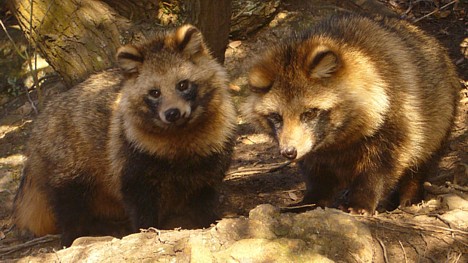
When not carrying out his official duties as monarch of Japan, Emperor Akihito takes a deep interest in scientific research. A keen ichthyologist, the Emperor has published dozens of scientific papers on members of the goby family, and his work is so well known that the recent discoverers of a new goby species (Exyrias akihito) named their fish after him.
But while most of the Emperor's past work has focused on gobies, his latest research investigates the feeding habits of wild tanuki -- also known as raccoon dogs (Nyctereutes procyonoides) -- that inhabit the spacious grounds of the Imperial Palace in Tokyo.
The research, which was published in the Bulletin of the National Museum of Nature and Science in June, involved the analysis of tanuki dung samples collected from the Imperial Palace grounds between April 2006 and December 2007. In all, 169 samples were collected from 30 "dung accumulation sites" (apparently, tanuki have certain preferred locations they use again and again). The samples were inspected for remnants of undigested materials that revealed the tanuki's feeding habits and seasonal changes in diet. At his own request, the Emperor performed the dirty work himself.
The Emperor's findings, which were written with the assistance of four researchers from the National Museum of Nature and Science, suggest that the tanuki inhabiting the forested area around the Imperial Palace feed heavily on nuts, insects (especially ground beetles) and birds -- unlike their suburban cousins who subsist on a steady diet of human garbage.

No Comments
Trackbacks/Pingbacks